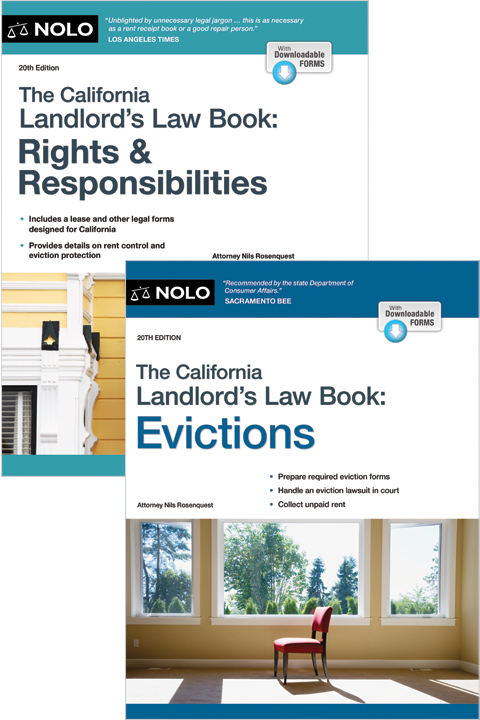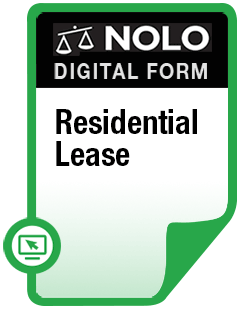The essentials about evictions that every New York landlord and tenant should know.
In New York, a landlord can evict a tenant for any number of reasons. However, before the eviction can occur, the landlord must first terminate the tenancy. This happens when the landlord gives the tenant written notice, as required by state or city law. If the tenant doesn't comply with the notice, the landlord can file an eviction lawsuit with the court.
New York laws require the landlord to end a tenancy in very specific ways. Different types of notices and procedures are needed for different situations. This article will provide a general overview of the rules landlords and tenants must follow when evicting a tenant or ending a tenancy in New York.
It is important to note that eviction laws and rules might be different depending on whether the rental property is located within New York City or outside the city, and whether the property is rent regulated or not. For further information or questions, contact a lawyer or a landlord trade group such as the Rent Stabilization Association of New York City.
Notice for Termination With Cause
If a landlord wants to terminate a tenancy early, or have a tenant move out before the rental term has expired, the landlord will need to have cause. The tenant can be evicted early for a couple of different reasons, including not paying rent or violating the lease or rental agreement. To start the eviction process, the landlord must give the tenant written notice. The type of notice needed will be determined by the reason for the eviction.
- 14-Day Notice to Pay Rent or Quit: If the tenant doesn't pay rent when it is due, the landlord can give the tenant a 14-day notice to pay rent or quit. This notice will inform the tenant that the tenant has 14 days to either pay rent in full or move out of the rental unit. If the tenant doesn't pay the rent or move out, the landlord can file an eviction lawsuit with the court at the end of the 14 days. (N.Y. Real Prop. Acts § 711(2) (2023).)
- Notice to Cure and Notice of Termination: If the landlord wants to evict the tenant because the tenant has violated the lease, the landlord must provide the tenant with two different types of notice.
- Notice to Cure: The notice to cure is the first notice the landlord needs to give the tenant who has violated the lease. If the rental is regulated, the notice must give the tenant 10 days (or however much time is set by the applicable rent regulation) to correct the lease violation. If the rental is not regulated, there is no set time period for a notice to cure. If the tenant fixes the problem, the landlord can't take any further steps against the tenant. However, if the tenant doesn't correct the violation, the landlord can give the tenant a notice of termination.
- Notice of Termination: The landlord can give the tenant a notice of termination after the landlord has already given the tenant a notice to cure and the tenant has not complied with it. The notice of termination will then inform the tenant that the tenancy has been terminated because the tenant failed to correct the lease violation, and the tenant has 30 days to move out of the rental unit. If the tenant doesn't move out of the rental unit, then the landlord can begin eviction proceedings against the tenant through the court system. (N.Y. Real Prop. Acts §§ 711, 753(4) (2023).)
Notice for Termination Without Cause
A landlord can't end a tenancy early without cause. A landlord who doesn't have cause to terminate the tenancy must wait until the end of the lease or rental period before asking or expecting the tenant to move. The landlord may still need to give the tenant notice that the lease isn't being renewed, though.
Month-to-Month Rental Agreement
When a tenant has a month-to-month rental agreement and the landlord wants the tenant to move but does not have cause, the amount of required notice depends on how long the tenant has been living in the rental.
- Tenants occupying for a year or having a lease of at least one year: 30 days' notice.
- Tenants occupying from one to two years and lease holders of one to two year leases: 60 days' notice.
- Tenants occupying more than two years or having leases of two years or more: 90 days' notice.
(N.Y. Real Prop. § 226-c (2023).)
Fixed-Term Lease
When a tenant has a fixed-term tenancy, such as six months or one year, and the landlord doesn't have cause to terminate the tenancy early, the landlord must wait until the end of the term before expecting the tenant to move. Once the term ends, the landlord doesn't need to give the tenant notice to move, unless the terms of the lease require the landlord to do so; the landlord can expect the tenant to move out of the rental unit at the end of the term (unless the tenant has indicated otherwise, such as by asking for a lease renewal).
Tenant Defenses to Eviction in New York
Even though a landlord thinks there is cause to evict a tenant, the tenant may decide to fight the eviction. This would increase the amount of time the eviction lawsuit takes. The tenant may have several valid defenses, including:
- Landlord takes self-help actions. It's illegal in New York for a landlord to evict a tenant through any means other than obtaining a court order from a judge. A landlord can't turn off the utilities to the rental unit or change the locks on the doors or do anything that would interfere with the tenant's access to the property or use of the property. This type of behavior is often referred to as a "self-help" eviction. If a landlord attempts to evict a tenant with a "self-help" eviction, the tenant could sue the landlord for damages. (N.Y. Real Prop. Law §§ 235 and 853 (2023).)
- Landlord fails to follow proper eviction procedures. It's very important for landlords to carefully follow all the eviction procedures set forth in New York law. Otherwise, the eviction might not be valid. For example, when a landlord doesn't give a proper amount of termination notice, the tenant can use lack of notice as a defense to the eviction. The eviction lawsuit would stop, and the landlord would be required to start over and give the tenant proper notice. Technical defenses like this don't usually prevent an eviction; rather, they simply delay it, because as soon as the landlord fixes the procedure, the eviction can proceed.
- Tenant pays rent in full. When a tenant fails to pay rent on time, the landlord can't file for eviction without giving the tenant a three-day notice stating that the landlord will begin an eviction lawsuit unless the tenant pays rent or moves out of the rental within three days. If the tenant pays rent during the three-day time period, the landlord can't proceed with an eviction lawsuit. (N.Y. Real Prop. Law § 711 (2023).) Tenants should always ask for a time-stamped receipt when paying rent. This way, if the landlord goes forward with the eviction, the tenant can use the receipt as proof that the rent was paid during the appropriate time period.
- Landlord fails to maintain rental. In New York, a landlord is required to maintain a rental unit in a fit and habitable condition. This means the landlord must supply the rental unit with the necessary utilities, including running water and heat, and then make any necessary repairs as needed. In certain circumstances, tenants can either withhold rent until the landlord makes the repairs, or make the repairs themselves and deduct the cost from rent. If a landlord tries to evict the tenant after the tenant exercises one of these options, the tenant can defend against the lawsuit by showing that the landlord didn't maintain the rental unit.
- Landlord evicts the tenant for illegal discriminatory reasons. The federal Fair Housing Act makes it illegal for a landlord to discriminate against a tenant based on race, religion, gender, national origin, familial status (including children under the age of 18 and pregnant women), and disability. The New York State Human Rights Law also makes it illegal for a landlord to discriminate against a tenant based on creed, age, sexual orientation, marital status, or military status. If a landlord tries to evict a tenant based on any of these characteristics, the tenant can use the discrimination as a defense to the eviction.
Removal of the Tenant
It is illegal for a landlord to try to force a tenant to move out of a rental unit. The tenant can only be removed after the landlord has successfully won an eviction lawsuit. Even then, the only person who can legally remove the tenant from the rental unit is a sheriff. Illegally removing a tenant can have serious consequences for the landlord.
After the tenant has moved out, the landlord might find that the tenant left behind personal property. Unlike most states, New York doesn't have laws that tell a landlord how to deal with this property. However, the landlord shouldn't dispose of the property immediately. Instead, the landlord should notify the tenant of the abandoned property and give the tenant reasonable time to claim it. If the tenant doesn't claim it within a reasonable time, then the landlord can either sell or dispose of the property.
Rationale for New York Eviction Rules
Landlords must carefully follow all the rules and procedures required by New York law when evicting a tenant. Otherwise, the eviction may not be valid. Although these rules and procedures may seem burdensome to the landlord, the rules are there for a reason. Evictions often occur very quickly, with the end result being that the tenant has lost their home. The rules help ensure the eviction is justified and that the tenant has enough time to find a new place to live.
Talk to a Lawyer
Need a lawyer? Start here.
How it Works
- Briefly tell us about your case
- Provide your contact information
- Choose attorneys to contact you
- Briefly tell us about your case
- Provide your contact information
- Choose attorneys to contact you



